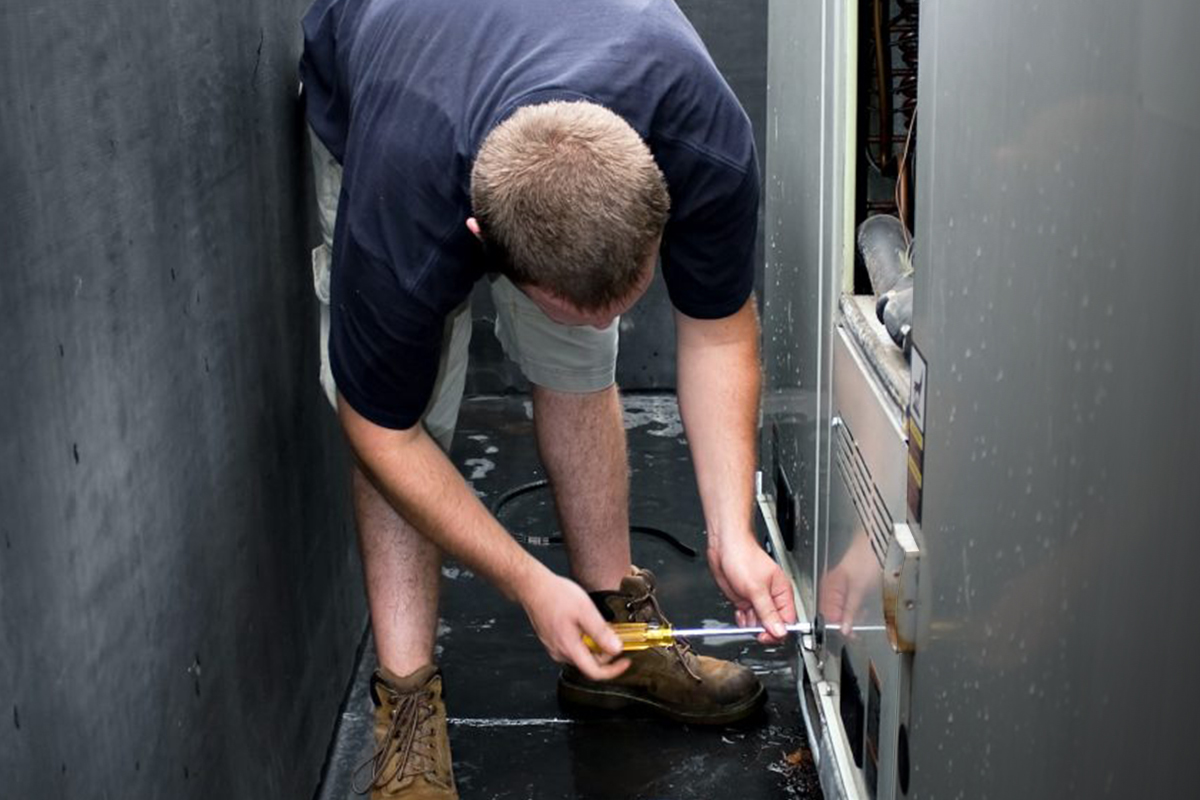In most industrial facilities, an industrial air compressor is an important utility. It is used for power, process and control throughout all aspects of operation, and is essential for keeping production up and running. However, unlike other utilities, compressed air is usually generated onsite with user-owned equipment.
While most companies do not produce their own electricity, heat or water, they often own and operate an on-site compressed air system. Because this utility is vital to a facility’s operation, a thorough preventative maintenance program should be implemented to minimize unexpected downtime resulting from compressor failure.
Every industrial air compressor is configured with a few common components that must be checked and serviced regularly. Working knowledge of the following five items will enable industrial compressed air users to better understand and maintain their equipment.
FILTERS
Filters are necessary components in all the mechanical systems of an industrial air compressor. They are installed in the air circuit, lubricant circuit, and control circuit to protect against contamination. Each filter serves a unique and important purpose and must be cleaned or replaced based on the manufacturer’s recommended intervals and environmental conditions.
Additionally, there are several filters that require regular attention when it comes to lubricated rotary screw compressors.
Air Inlet Filter
Removes contaminants from inlet air before it enters the compressor.
Lubricant Filter
Cleans the industrial air compressor’s lubricant – protecting precision metal parts from damage caused by solid contaminants in the oil circuit.
Air/Oil Separator
Because lubricated rotary screw compressors operate with a flooded compression chamber, an air/oil mixture is discharged from the compressor air-end. Before usable compressed air can be discharged from the compressor package, the air and lubricant must be separated. The air/oil separator serves this purpose and is equipped with a replaceable coalescing filter element that should be changed regularly.
Control Line Filters
Many industrial air compressors are equipped with pneumatic lines for controlling and sensing various functions during unit operation. Proper maintenance of control line filters helps to ensure the air compressor is responding appropriately to changes in system demand.
COOLERS
Effective removal and dissipation of heat is an ongoing battle in every industrial air compressor. The heat of compression must continually be expelled to prevent unsafe operating conditions and machine failure. In light of this fact, compressor coolers must be regularly inspected and cleaned during routine maintenance.
Air-cooled rotary screw compressors are often equipped with a heat exchanger for the lubricant, and a separate exchanger (aftercooler) for the discharge air stream. Over time, these coolers will become clogged with dust and other contaminants from the ambient environment.
Water-cooled compressors are usually configured similarly. However, they use water as a cooling medium instead of air. Cleaning and maintaining water-cooled heat exchangers can be trickier than their air-cooled counterparts, as these units are more subject to corrosion, clogging, and leaks.
Additionally, many centrifugal and multi-stage industrial air compressors include inter-stage coolers to reduce the temperature between stages of compression. These coolers must also be checked regularly to identify potential problem areas.
LUBRICANT
Air compressor lubricants serve a multitude of functions. In oil-flooded compressors, lubricants are used to remove the heat of compression, seal clearances in the compression chamber, and lubricate bearings. In compressor motors and gearboxes, separate lubricants are used to reduce friction between components for increased equipment longevity.
Regardless of their purpose, all industrial air compressor lubricants must be selected and maintained properly. This is one of the most critical maintenance areas for operators of industrial compressed air systems. Users that neglect to monitor and maintain the condition of their compressor lubricant can cause irreparable damage to their compressed air systems.
Regular oil sampling and analysis can turn a good compressor PM program into a great one. By analyzing the chemical properties of a compressor’s lubricant, we can spot potential problems before they occur. At HOLT Industrial Systems, our standard oil sample report highlights many aspects of lubricant condition – like particle count, water content, and total acid number. This allows us to make informed and insightful recommendations to our customers about how to better maintain their equipment.
GEORGE SAEZ, SERVICE MANAGER, SULLAIR OF HOUSTON
CONTROLS
Controls are an often misunderstood and overlooked system in industrial air compressors. However, their impact on the reliability, longevity and efficiency of industrial air systems cannot be understated.
In general, the controls of an industrial air compressor enable it to respond appropriately to changes in system demand. For example, when system pressure drops, an air compressor should respond by increasing output to offset demand. When pressure rises, an air compressor should respond by decreasing output to prevent over-pressuring the system.
There are many compressor control types available today – each with a unique set of characteristics and benefits. However, regardless of type, all compressor control systems consist of several mechanical and electrical components that must be incorporated into the unit PM program. Potential maintenance items include valves, solenoids, regulators, switches, transmitters, tubing, etc. If one of these items requires service, the air compressor can operate unpredictably.
Call a trusted compressor service provider for help troubleshooting and repairing control problems.
DRAINS
Most industrial air compressor systems are equipped with several condensation drains. Often, there are drains installed on compressors, filters, dryers, and receiver tanks. When functioning properly, these drain valves expel liquid water to protect downstream equipment from potential corrosion or damage. However, if not regularly checked and maintained, a compressed air condensate drain can fail – having a detrimental impact on system performance and reliability.
A drain valve that is stuck in the open position can be a nuisance. It creates an air leak that reduces system efficiency or even causes overall pressure to sag.
A drain valve that is stuck in the closed position can often be more problematic – sending liquid slugs of water downstream to overwhelm dryers, filters, and pneumatic equipment in the plant.
Many pneumatic control valves used in chemical processes and refining applications cost thousands of dollars. Even a small slug of water can ruin them, and replacement costs are very high. Protecting these components from liquid water is critical – and a simple, inexpensive maintenance program for compressor condensate drains can help to prevent major failures down the road.
STEVE MAHAFFEY, SULLAIR OF HOUSTON


